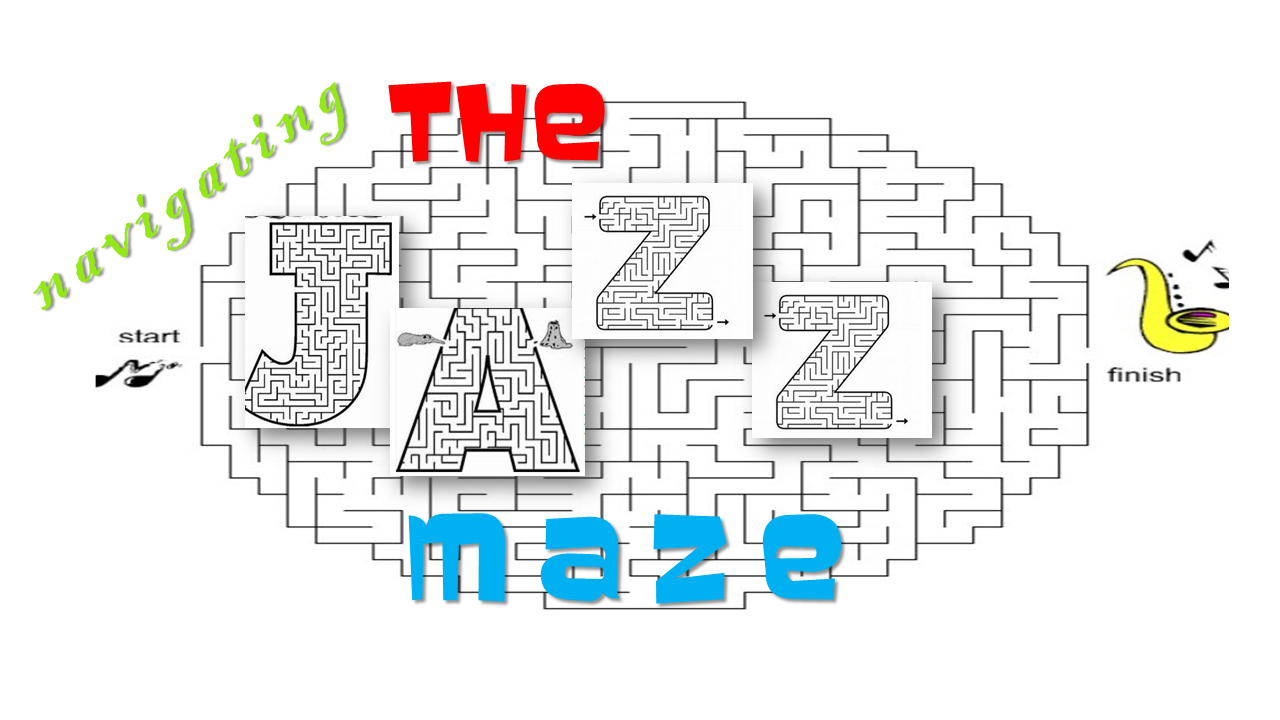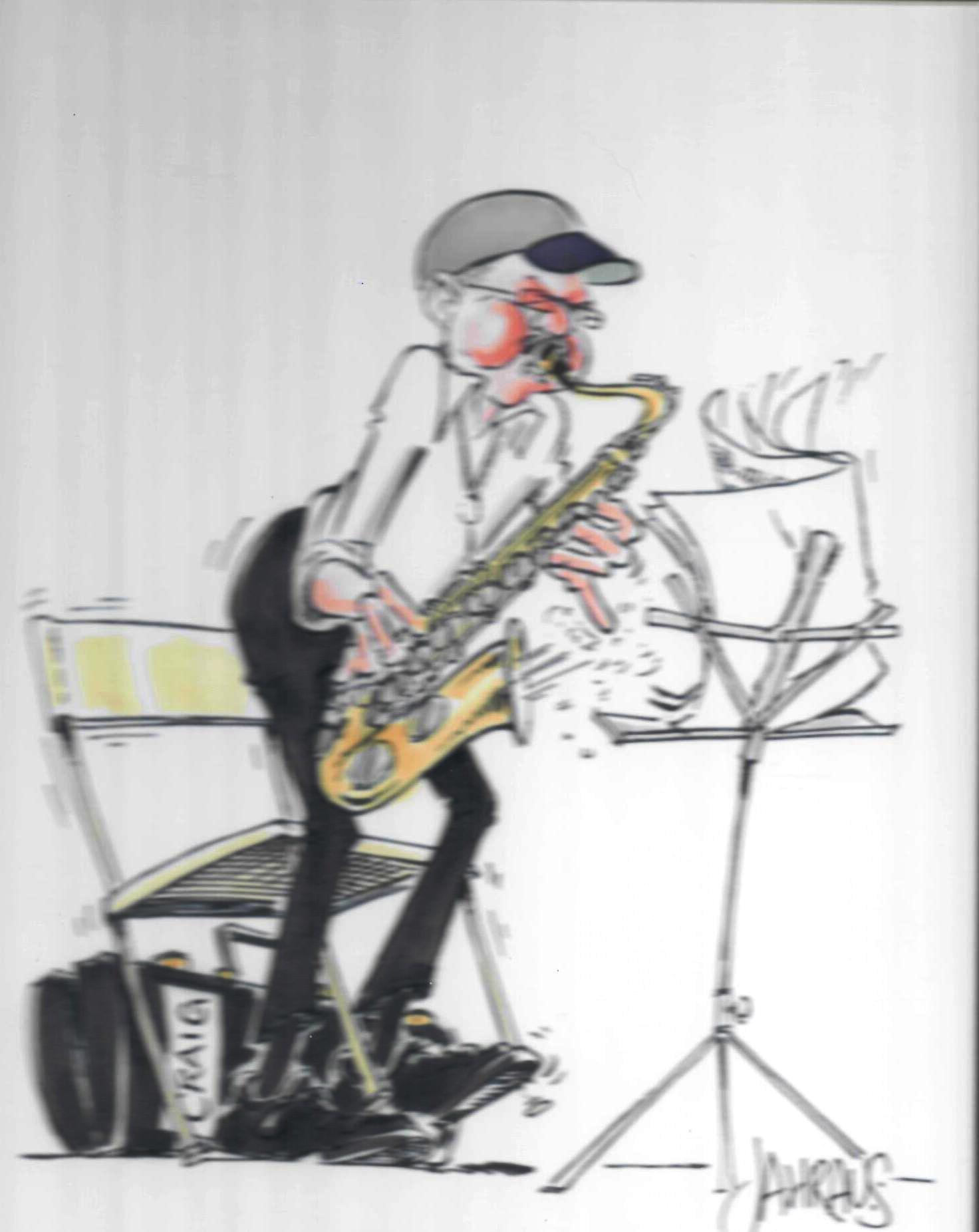You can Learn to Improvise at the Dungeness Creative Music Workshop, Wednesday Afternoons from April 3-June 5, 12:30-2:30 PM. Register Today. Tuition is only $150 for this 20 hour workshop. Email craig@craigbuhler.com or check out this video for details.
Tag: play by ear
A Harmonic Minor Workout
 Pianist Dr. J. H. asked for a melodious exercise he could use to explore the harmonic minor scale in all 12 keys. The “harmonic minor scale” features the natural 6th degree FA along with the raised 7th degree. The raised 7th degree in a minor scale is the syllable known as “si” (pronounced “SEE”). It’s also referred to as “#SO” or “#7.” That scale is shown here:
Pianist Dr. J. H. asked for a melodious exercise he could use to explore the harmonic minor scale in all 12 keys. The “harmonic minor scale” features the natural 6th degree FA along with the raised 7th degree. The raised 7th degree in a minor scale is the syllable known as “si” (pronounced “SEE”). It’s also referred to as “#SO” or “#7.” That scale is shown here:
I Dig This One !
 Does improvising bring you joy? If you’re playing music you love, both you and your audience will be swept up in that transcendent joy. Here’s a topsy-turvy, tangled up, spaghetti-shaped, four-bar phrase that just tickles my spirit every time I play it. Hope you dig it too. Click here to watch the video.
Does improvising bring you joy? If you’re playing music you love, both you and your audience will be swept up in that transcendent joy. Here’s a topsy-turvy, tangled up, spaghetti-shaped, four-bar phrase that just tickles my spirit every time I play it. Hope you dig it too. Click here to watch the video.
Mode For Joe
 Saxophonist Maria is improvising over Joe Henderson’s classic jazz standard “Recorda-Me.” I asked her whether she would use the Dorian or Aeolian mode over the first 4 bars.
Saxophonist Maria is improvising over Joe Henderson’s classic jazz standard “Recorda-Me.” I asked her whether she would use the Dorian or Aeolian mode over the first 4 bars.
As shown below, the Aeolian is the mode rooted on LA, so it uses a lowered 6th degree. By contrast, the Dorian is rooted on RE, so it features a raised 6th degree.
Fresh Out of Ideas
Tenor saxophonist Brooklyn brought a favorite tune to his lesson. As always, we typed the changes into Band in a Box, chose a tempo and a groove, and started blowing on the tune. But Brooklyn said he was having trouble coming up with fresh ideas to play over the changes.
Slippery Slope
For fans of Brazilian bossa nova jazz, here is a bright bossa composed and performed by tenor saxophonist Craig Buhler. In addition, if you have ever taken a terrible tumble, these ski slope stumble scenes will give you a chuckle and remind you that you’re not alone.
Below is a chart for B flat instruments you can view or download, in case you’d like to perform this song. (For charts in other keys or clefs, send me a comment listing your instrument, key, range, and preferred clef.) Continue reading “Slippery Slope”
Fixed DO Versus Movable DO
“I was trained using ‘Fixed DO.’ In other words, if I am playing an E Major scale, I was taught to name the notes ‘MI, FA#, SO#, LA, TI, DO#, RE# MI’. Your book, “New Ears Resolution,” teaches me to think in terms of ‘Movable DO.’ What is your reason for preferring this method?”
Thank you for bringing this point up, Pascal. This is an extremely important question you have asked.
Playing by Ear in Different Keys
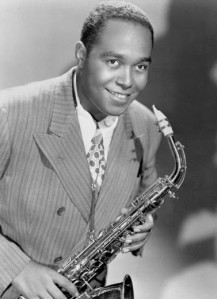 Saxophonist Pascal asked an excellent question concerning how to play by ear in different keys:
Saxophonist Pascal asked an excellent question concerning how to play by ear in different keys:
“Regarding exercises involving arpeggios, inversions, or scales on saxophone: When using movable DO, should I think of each tonality as if it were C Major? For example, when I play in E major, do I think, “DO RE MI FA SO LA TI DO”? Is it as if there were only one Major scale on each starting key? This is a revelation for me!”
Good question, Pascal. A major scale has the same specific form, regardless of which note is chosen to be DO. Here is that form shown as a schematic and on the piano keyboard:
Have Fun with ii-V-I !
 If your set list includes numbers from “The Great American Song Book,” then you’re going to wrestle with the ii-V-I progression in a bunch of keys. Here’s a winsome ii-V-I phrase to help strengthen your chops, develop your ear, and arouse your creative vocabulary as a improviser. Click here to watch the video.
If your set list includes numbers from “The Great American Song Book,” then you’re going to wrestle with the ii-V-I progression in a bunch of keys. Here’s a winsome ii-V-I phrase to help strengthen your chops, develop your ear, and arouse your creative vocabulary as a improviser. Click here to watch the video.
Did the Key Change or What?
 The unpredictable flow of shifting key centers can easily throw uninitiated players off balance, especially when jamming on unfamiliar tunes. CLICK HERE TO WATCH THE VIDEO.
The unpredictable flow of shifting key centers can easily throw uninitiated players off balance, especially when jamming on unfamiliar tunes. CLICK HERE TO WATCH THE VIDEO.
Another Blues Scale
Click here to watch the video.
The blues idiom offered early twentieth century musicians a new way to share deep emotional feelings vigorously and honestly.
A hundred thirty years earlier, Mozart had reveled in the fresh, airy lightness of the major tonality which superseded stolid Renaissance modal forms around 1600.
Periodic innovations like these keep music vibrant and invigorating. Unfortunately, too many of today’s musicians bloat their playing with endless, unimaginative, repetitive blues licks. Sure, blues licks can add a funky edge, but overuse of these clichés leads to tiresome monotony.
(And so on, and so on….Well, you get the idea!)
Rhythm 2: Express Yourself!
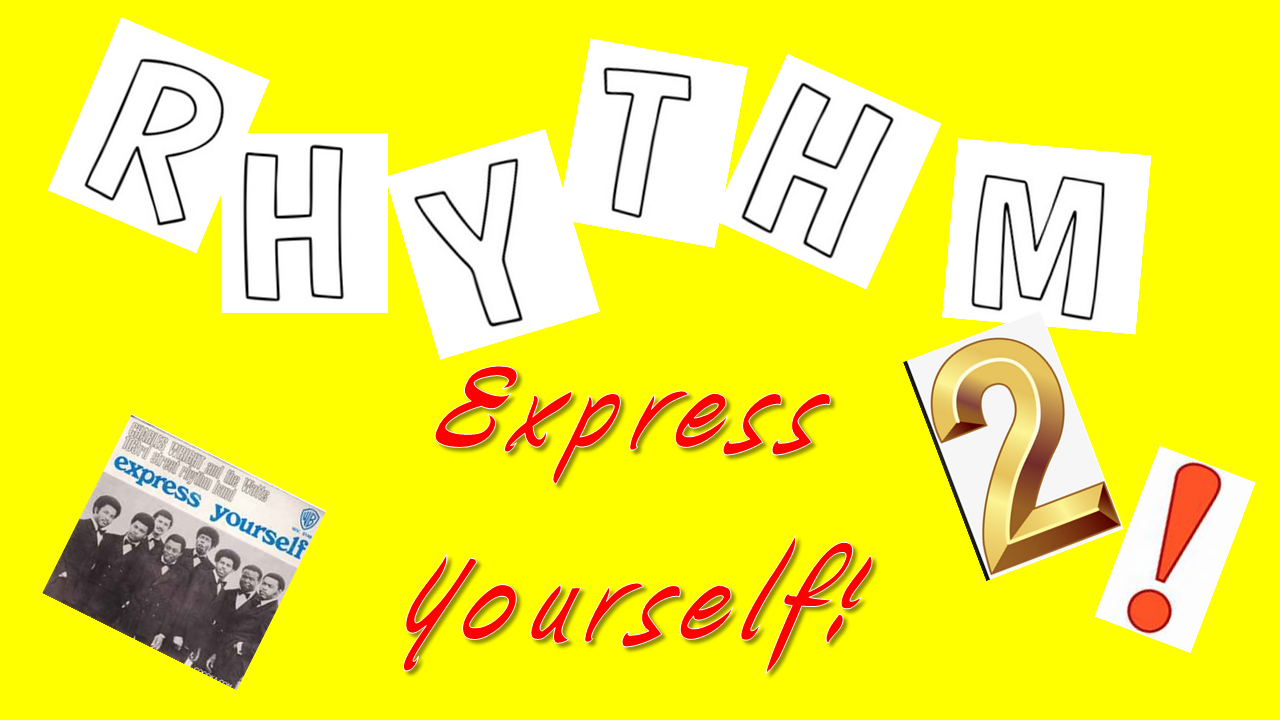
Swinging rhythms are the foundation and heartbeat of great jazz. Our first “Rhythm” video was a primer on how to play jazz rhythms. Click here to watch it.
In this video, we’ll talk about how you can use rhythm to effectively express yourself: your thoughts, your feelings, your personality, your unique story.
I feel so much more like I do now than I did when I first got here.*
Jazz gigs seldom turn out exactly as we expect them to. Since jazz is, by definition, an improvised art, this should come as no surprise. It’s a maze which often thrills, sometimes shatters, and continually amazes us.
Let’s say, for example, that you arrive at the gig late, stressed, un-showered, and unready to perform. It’s at this point that a fan drops a hundred dollar bill in the tip jar, Herbie Hancock asks to sit in, and your first solo provokes a standing ovation. In your dreams, right?
The nature of jazz will, at times, lead to the unexpected, to exciting innovation, to surprise, to joyful discovery. …Occasionally, it leads nowhere. After all, life’s mazes do include blind alleys. Just the same, we “press on regardless” (as my father often preached on rainy hikes), in search of the perfect note, aye? Continue reading “I feel so much more like I do now than I did when I first got here.*”
BLOW TILL YOU KNOW
Are you struggling to develop a personal improvisatory style or to find your unique compositional voice? Well, you’re not alone! Many musicians grapple with these dilemmas.
Perhaps my own story will help you unearth your path to musical originality.
I started playing because I love the way music sounds, the way playing the horn feels, the exhilaration of working with a great band of like-minded musicians. A couple years later, I began writing songs, just so we’d have originals for gigs and recordings. I didn’t think twice about trying to be original. On the contrary, emulating the masters was satisfying. It seemed to legitimize and validate my work.
However, about 10 years into my career, I suddenly faced an existential crisis, when nagging questions like these began keeping me awake at night:
“Is this composition any good? Is it too long? Which sections are valid and which need to be scrapped? Should that note be a Bb or an F#? Do my solos stink? What right do I even have to compose music or play the horn, when there are so many musicians out there who are way better?”
Chromatic Cro-Magnum P.I. (Practice Improv)
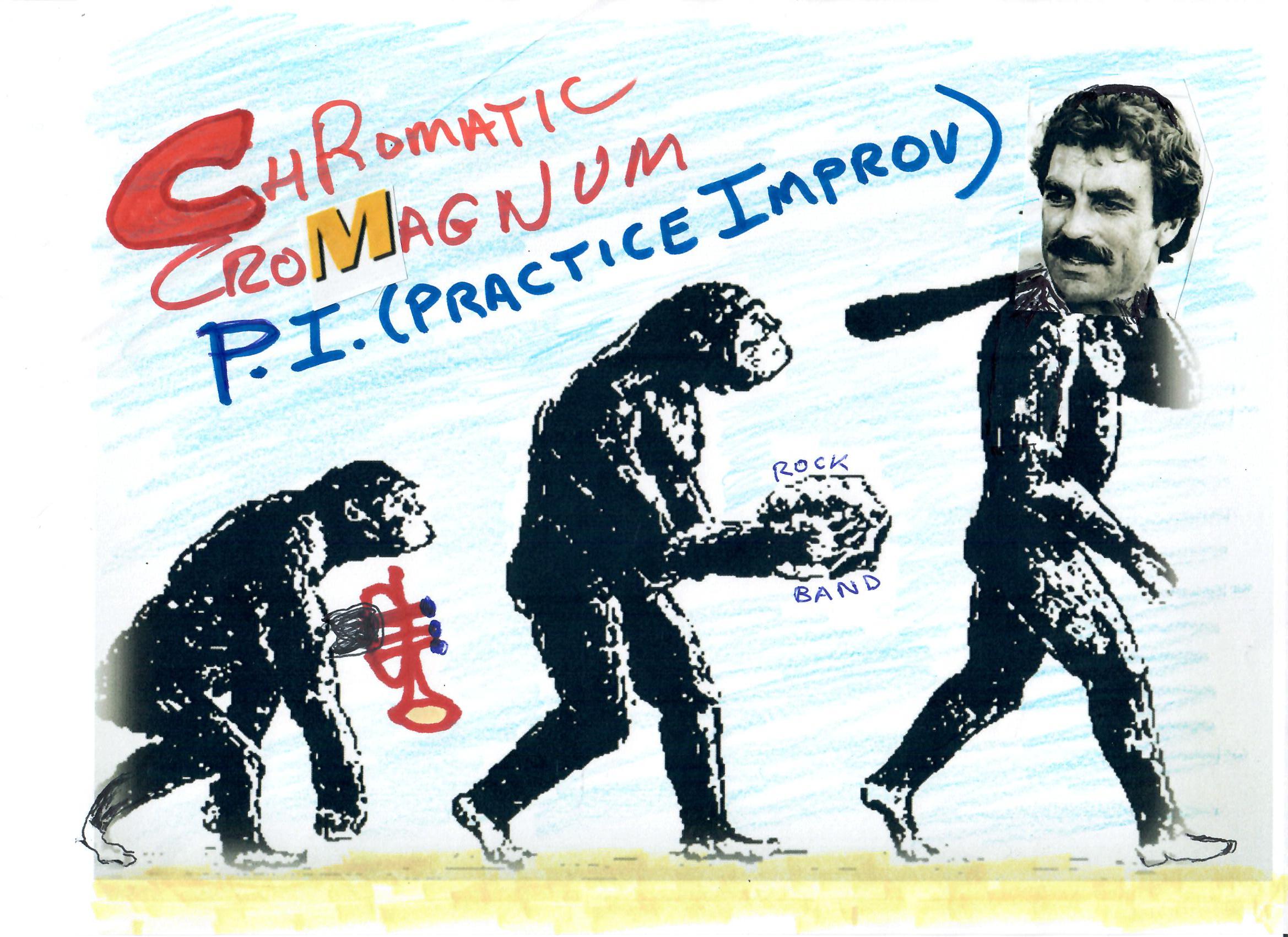 Ever feel totally drained after a big gig with no steam left to practice, like a malnourished Cro-Magnon? That’s how I felt this morning, after last night’s intense concert backing up my friend presenting 14 of his complex original compositions.
Ever feel totally drained after a big gig with no steam left to practice, like a malnourished Cro-Magnon? That’s how I felt this morning, after last night’s intense concert backing up my friend presenting 14 of his complex original compositions.
What’s a person to do? Well, “one foot in front of the other,” as the old saying goes. Just start blowing long tones; dig the sound of the horn, experience the feeling of wind on reed, fingers on pearls.
Here’s what emerged after an hour or so; a little chromatic meander that caught my imagination. As harmonized in this sketch, it forms a Dorian setting reminiscent of “So What,” “Little Sunflower,” “Jeanine,” or “Invitation.” It could also have been harmonized as a ii-V progression in C major modulating to D minor.

Click on “continue reading” below to see a chart and hear the recording in all 12 keys.
Continue reading “Chromatic Cro-Magnum P.I. (Practice Improv)”
Compose, Improvise, Practice: Three Birds, One Stone!
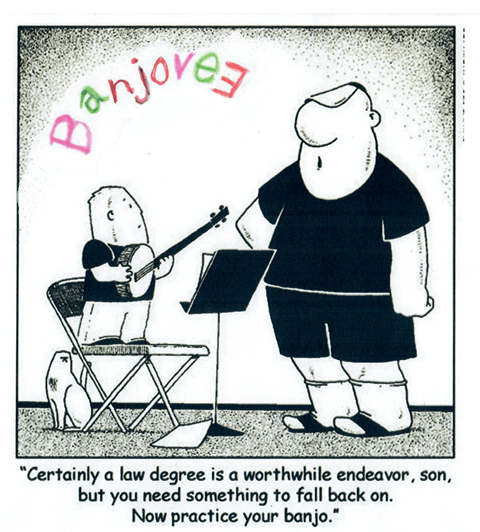
Do you ever NOT feel like practicing? If your go-to staple is a dry method book, you’ll probably answer “yes” – if you’re really honest.
On the other hand, if you dream of becoming an inventive improviser or an innovative composer, then read on!
Continue reading “Compose, Improvise, Practice: Three Birds, One Stone! “
Cantabile

It comes from growing up with James Brown, Sly Stone, and Tower of Power:
I prefer punchy, funky, accented articulation and short, clipped, syncopated rhythms.
But comes a time when smooth, cantabile phrasing is on the menu. So here goes.

If you want to woodshed this lick in all 12 keys, click “continue reading” below to see a complete chart, hear the complete recording @ 180 beats per minute (BPM) as well as a slower complete recording @ 100 BPM.
Band Bus Banter
On the band bus one day, a buddy criticized me for playing too many descending lines. According to him, “Descending is negative; Ascending lines are much more uplifting.” Oh….really?
Players constantly hear advice like that.
Another commentator assured me, “Your phrase cannot EVER begin on the downbeat; It’s got to be asymmetric.” OK, you win, asymmetric it is, smart guy! The customer’s always right, ay?
One nameless critic insisted, “In order to sound hip, your line has to include several non-harmonic tones.” Still another self-proclaimed “authority” touted the need to stuff many rhythmic devices into your phrase.
Finally, a laconic trombonist named Tex snoring in the back of the bus roused himself from slumber just long enough to drawl lazily,
“How a – bout we try ta swing, Stan?”
So what do you think?
What is it that makes a player sound fresh and innovative?
While listening to the masters and practicing, lines like this one seem to pop out of nowhere. Hit ► below and let me know if it works for you.
Click on “continue reading” below to see a chart in all 12 keys. Or download “New Ears Resolution” to supercharge your ear, so you can play licks like this one in all 12 keys without a chart.
Continue reading “Band Bus Banter”Discovering Your Personal Jazz Improvisational Style
Click on “continue reading” below to see the text of this video.
Continue reading “Discovering Your Personal Jazz Improvisational Style”
Got Improv?
You can learn how to improvise like a professional jazz musician! Watch this video to see how you can begin the exciting journey towards becoming a jazz improviser.
Transposing Charlie Parker’s “Confirmation” Using New Ears
A question just came in from a user of New Ears Resolution as to how he could use movable DO to transpose Charlie Parker’s “Confirmation.” (His letter is posted below.)
Continue reading “Transposing Charlie Parker’s “Confirmation” Using New Ears”
Why Is This Tune So Hard To Memorize?
Have you ever had difficulty playing a tune, even though it presented no obvious technical hurdles? Perhaps the problem lies in a hidden harmonic riddle, which, when solved, will unlock your understanding of the song and make it easier to play and to remember.
At a recent gig, pianist Mark Schecter called off Dizzy Gillespie’s “Groovin’ High.” Although Storyville used to play the song, it still made me stumble. However, after deciphering its harmonic implications, playing it became simple.
Here’s how to solve a riddle like that.
HOW I LEARNED TO PLAY BY EAR
Even many accomplished musicians never learn the fine art of playing by ear. A strong ear is a “must” for those of us musicians with visual disabilities. I owe my ear to a uniquely inspired teacher. The story begins in 1963. Continue reading “HOW I LEARNED TO PLAY BY EAR”
Improvising Using Skips
Are your improvisations based more on the chord changes (Coleman Hawkins approach) or on the melody (Lester Young approach)? Many players look at the chord progressions and derive either arpeggios or scale patterns based on the indicated changes. Here is an exercise that will develop your ability to integrate larger leaps into your melodic flow.
To derive the maximum benefit, practice this pattern in all 12 keys around the circle of fifths using the background track provided below. If you have difficulty figuring out the pattern in the other keys, contact me for a FREE chart (no cost or obligation). Better yet, download “New Ears Resolution” to learn how to play any melody in any key BY EAR!
Noted Guitarist Praises “New Ears Resolution”
This review of the Second Edition of “New Ears Resolution” was posted by the wonderful guitarist, singer, and educator Trevor Hanson http://trevorhanson.com/trevor/ . Trevor is highly respected for his work in both the jazz and classical fields and has a large following in Western Washington State.
- Basic concept: great. The basic concepts and the way you have organized their presentation are very useful. You have many good insights and analogies to help get students on board, even if they have had little formal training. There’s no question that moveable-do solfege is a tremendous learning aid, and you’ve done a good job at making it accessible and understandable. The early parts of your presentation assume that the reader has little or no background in music theory.
- Combining essential skills in small lessons. By combining ear training, scale/harmony theory, and repetition and presenting the material in small, easily manageable chunks, you’ve provided an excellent framework for learning that doesn’t overwhelm the student. Many theory books cover this material in just a few pages – making it difficult for students to achieve a working knowledge of (and quick memory for) these essential elements.
- Familiar tunes as examples. Linking little phrases to familiar tunes is very helpful. This is how most of us recognize intervals, patterns, and progressions. By providing examples, you save students time, since recognizing a short quote is often difficult.
- Audio files. Listening to and playing along with the audio files is a huge advantage.
- Scale/chord material. Your presentation of the scale modes is very good. I really like the clear examples showing how each mode can be derived from the Ionian, the examples showing how each modal color can be used, and the charts/audio exercises that contrast these elements. I found your discussion of Locrian m7(b5) and Phrigian sus(b9) even more useful. I ran out of time before getting a chance to look at Bill Green’s approach to the blues scale and V7#9#5 chord, and am looking forward to examining this section. These are all really important topics that most musicians just have to figure out by experimentation. You have provided a logical starting point for studying these elements.
Sincerely,
Trevor Hanson
www.TrevorHanson.com
Combining the Blues Scale With the Minor Scales
There is a lot of talk in improvisation texts about the three minor scales (which start on LA), the Dorian mode (which starts on RE), and the blues scale (which can begin on either one). However, the reality is that master jazz improvisers glide freely between all five scales with additional nuances interspersed. Below is a lick to illustrate this principle. Listen to the mp3 recording while looking at the chart. Try practicing this lick in all 12 keys. If you have difficulty, try slowing it down or looping the hard section with the FREE DOWNLOAD Best Practice. Or contact me for a FREE chart of the lick in 12 keys by filling in your email below. Your address will NOT be used for any other purpose, and it will NOT be saved. Better yet, if you want to learn to play jazz by ear, download New Ears Resolution.
You Can Learn to Play by Ear with “New Ears Resolution”
New Ears Resolution has helped hundreds of musicians learn to play by ear over the past 15 years. And now, the Second Edition offers scores of new innovations designed to make your learning experience more enjoyable, effective, and thorough.
Download “New Ears Resolution” for just $9.99. Click here.
OR Purchase the physical book and CD via PayPal for just $19.99 plus shipping. Click here.
 Whether you work with a jazz combo, rock group, or big band, or just play for your own pleasure, “New Ears Resolution” will help you become the musician you have always wanted to be.
Whether you work with a jazz combo, rock group, or big band, or just play for your own pleasure, “New Ears Resolution” will help you become the musician you have always wanted to be.
i’ve taught this method for years and have used it in my own performances. i’ve researched extensively in order to improve its design and have thus developed a comprehensive approach to the art of playing by ear.
HOW IS “NEW EARS” DIFFERENT FROM OTHER METHODS?
Continue reading “You Can Learn to Play by Ear with “New Ears Resolution””






